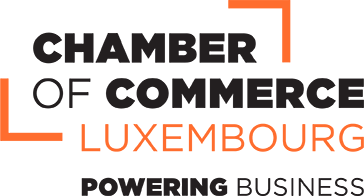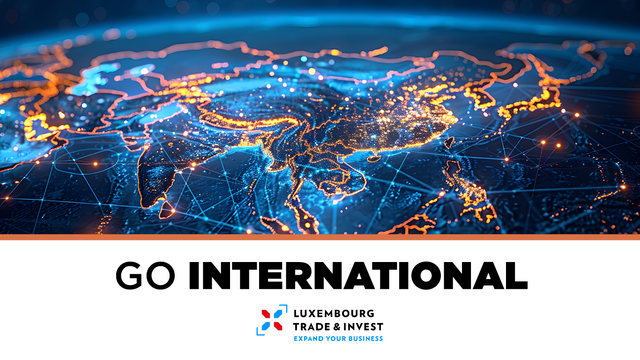
Chapitres
Ukraine was the center of the first eastern Slavic state, Kyivan Rus, which during the 10th and 11th centuries was the largest and most powerful state in Europe. Weakened by internecine quarrels and Mongol invasions, Kyivan Rus was incorporated into the Grand Duchy of Lithuania and eventually into the Polish-Lithuanian Commonwealth. The cultural and religious legacy of Kyivan Rus laid the foundation for Ukrainian nationalism through subsequent centuries. A new Ukrainian state, the Cossack Hetmanate, was established during the mid-17th century after an uprising against the Poles. Despite continuous Muscovite pressure, the Hetmanate managed to remain autonomous for well over 100 years. During the latter part of the 18th century, most Ukrainian ethnographic territory was absorbed by the Russian Empire. Following the collapse of czarist Russia in 1917, Ukraine achieved a short-lived period of independence (1917-20), but was reconquered and endured a brutal Soviet rule that engineered two forced famines (1921-22 and 1932-33) in which over 8 million died. In World War II, German and Soviet armies were responsible for 7 to 8 million more deaths. Although Ukraine achieved final independence in 1991 with the dissolution of the USSR, democracy and prosperity remained elusive as the legacy of state control and endemic corruption stalled efforts at economic reform, privatization, and civil liberties.
A peaceful mass protest referred to as the "Orange Revolution" in the closing months of 2004 forced the authorities to overturn a rigged presidential election and to allow a new internationally monitored vote that swept into power a reformist slate under Viktor YUSHCHENKO. Subsequent internal squabbles in the YUSHCHENKO camp allowed his rival Viktor YANUKOVYCH to stage a comeback in parliamentary (Rada) elections, become prime minister in August 2006, and be elected president in February 2010. In October 2012, Ukraine held Rada elections, widely criticized by Western observers as flawed due to use of government resources to favor ruling party candidates, interference with media access, and harassment of opposition candidates. President YANUKOVYCH's backtracking on a trade and cooperation agreement with the EU in November 2013 - in favor of closer economic ties with Russia - and subsequent use of force against civil society activists in favor of the agreement led to a three-month protest occupation of Kyiv's central square. The government's use of violence to break up the protest camp in February 2014 led to all out pitched battles, scores of deaths, international condemnation, and the president's abrupt departure to Russia. New elections in the spring allowed pro-West president Petro POROSHENKO to assume office on 7 June 2014.
Shortly after YANUKOVYCH's departure in late February 2014, Russian President PUTIN ordered the invasion of Ukraine's Crimean Peninsula claiming the action was to protect ethnic Russians living there. Two weeks later, a "referendum" was held regarding the integration of Crimea into the Russian Federation. The "referendum" was condemned as illegitimate by the Ukrainian Government, the EU, the US, and the UN General Assembly (UNGA). Although Russia illegally annexed Crimea after the "referendum," the Ukrainian Government, backed by UNGA resolution 68/262, asserts that Crimea remains part of Ukraine and fully under Ukrainian sovereignty. Russia also continues to supply separatists in two of Ukraine's eastern provinces with manpower, funding, and materiel resulting in an armed conflict with the Ukrainian Government. Representatives from Ukraine, Russia, and the unrecognized separatist republics signed a ceasefire agreement in September 2014. However, this ceasefire failed to stop the fighting. In a renewed attempt to alleviate ongoing clashes, leaders of Ukraine, Russia, France, and Germany negotiated a follow-on peace deal in February 2015 known as the Minsk Agreements. Representatives from Ukraine, Russia, and the Organization for Security and Cooperation in Europe also meet regularly to facilitate implementation of the peace deal. Scattered fighting between Ukrainian and Russian-backed separatist forces is still ongoing in eastern Ukraine.
Source: The CIA Word Factbook - Ukraine
Indicateurs clés
- Surface
- 603,550 km2
- Population
- 43,745,640 (July 2021 est.)
- Type de gouvernement
- semi-presidential republic
- Langues
- Ukrainian (official) 67.5%, Russian (regional language) 29.6%, other (includes small Crimean Tatar-, Moldovan/Romanian-, and Hungarian-speaking minorities) 2.9% (2001 est.)
- PIB
- $155.582 billion (2020 est.)
- Taux de croissance
- -4% (2020 est.)
- HDI
- 74
- Capitale
- Kiev
Indicateurs macroéconomiques
Ukraine’s oligarch-dominated economy grew slowly from 2010 to 2013, but remained behind peers in the region and among Europe’s poorest. After former President YANUKOVYCH fled the country during the Revolution of Dignity, Ukraine’s economy fell into crisis because of Russia’s annexation of Crimea, military conflict in the east of the country, and a trade war with Russia, resulting in a 17% decline in GDP, inflation at nearly 60%, and dwindling foreign currency reserves. The international community began efforts to stabilize the Ukrainian economy, including a March 2014 IMF assistance package of $17.5 billion, of which Ukraine has received four disbursements, most recently in April 2017, bringing the total disbursed as of that date to approximately $8.4 billion. Ukraine has made significant progress on reforms designed to make the country prosperous, democratic, and transparent. But more improvements are needed, including fighting corruption, developing capital markets, and improving the business environment to attract foreign investment, and privatizing state-owned enterprises.
Russia’s occupation of Crimea in March 2014 and ongoing aggression in eastern Ukraine have hurt economic growth. With the loss of a major portion of Ukraine’s heavy industry in Donbas and ongoing violence, Ukraine’s economy contracted by 6.6% in 2014 and by 9.8% in 2015, but The Ukrainian economy returned to low growth in in 2016 and 2017, reaching 2.3% and 2.0%, respectively, as key reforms took hold. It also redirected trade activity towards the EU following the implementation of a bilateral Deep and Comprehensive Free Trade Agreement, displacing Russia as Ukraine’s largest trading partner. A prohibition on commercial trade with separatist-controlled territories in early 2017 has not impacted Ukraine’s key industrial sectors as much as expected, largely because of favorable external conditions. Amid positive economic developments, Ukraine returned to international debt markets in September 2017, issuing a $3 billion sovereign bond.
Source: The CIA World Factbook - Economic overview Ukraine
IMF Statistics:
| Subject descriptor | 2023 | 2024 | 2025 | 2026 | 2027 |
|---|---|---|---|---|---|
|
All Items, Consumer price index (CPI), Period average, percent change Percent (Units) |
12.851 |
6.504 |
12.64 |
7.625 |
5.29 |
|
Current account balance (credit less debit), Percent of GDP Percent (Units) |
-5.277 |
-7.21 |
-16.507 |
-12.611 |
-5.444 |
|
Current account balance (credit less debit), US dollar US dollar (Billions) |
-9.564 |
-13.749 |
-34.618 |
-28.28 |
-12.986 |
|
Exports of goods and services, Volume, Free on board (FOB), Percent change Percent (Units) |
-8.484 |
16.821 |
2.99 |
14.874 |
14.262 |
|
Gross domestic product (GDP), Constant prices, Percent change Percent (Units) |
5.535 |
2.914 |
2.0 |
4.5 |
4.8 |
|
Gross domestic product (GDP), Current prices, Per capita, US dollar US dollar (Units) |
5326.189 |
5718.991 |
6381.676 |
6717.821 |
7014.455 |
|
Gross domestic product (GDP), Current prices, US dollar US dollar (Billions) |
181.228 |
190.687 |
209.713 |
224.259 |
238.531 |
|
Imports of goods and services, Volume, Cost insurance freight (CIF), Percent change Percent (Units) |
18.488 |
5.971 |
19.298 |
4.696 |
5.502 |
|
Unemployment rate |
19.072 |
13.1 |
11.573 |
10.188 |
9.376 |
Source: IMF Statistics - Ukraine
Le Luxembourg et le pays
Existing conventions and agreements
Non double taxation agreement
In order to promote international economic and financial relations in the interest of the Grand Duchy of Luxembourg, the Luxembourg government negotiates bilateral agreements for the avoidance of double taxation and prevent fiscal evasion with respect to Taxes on Income and on fortune with third countries.
- Convention from 30.09.2016 (Memorial 2001, A No.97, p.1921)
- Effective as of 01.01.2018 (Memorial 2001, A No.97, p.1921)
Air Services agreement
- Agreement from 06.14.1994 (Memorial 1995, A, p. 1646)
- Effective as of 11.15.1995 (Memorial 1995, A, p. 2219)
Source: Administration des contributions directes
Annuler les modifications
Informations supplémentaires
Foreign Trade
The Statec Foreign Trade statistics provide information on the trade of goods - by product and by country. This information is collected respectively through the INTRASTAT declaration and on the basis of customs documents.
You can see the statistics on the website of the Statec.
Contact points in Ukraine
Embassy of the Grand Duchy of Luxembourg in Ukraine
Ambassador with residence in Prague: Mr Gérard PHILIPPS
9 Street Apolinarska
CZ - 128 00 PRAHA 2
Czechia
Tel.: (+420) 257 18 18 00
Fax: (+420) 257 53 25 37
E-Mail: prague.amb@mae.etat.lu
Website: prague.mae.lu
Honorary Consuls
Honorary Consul with jurisdiction over the Republic of Ukraine:
Mr Nikolai Mikhailovich NOVIKOV
1/10 Bankova st., office 17
01024 Kiev
Ukraine
Tel.: (+380) 44 4906929
E-Mail: skrynnik.oksana@gmail.com
Source: Ministry of Foreign Affairs of Luxembourg
Country risk as defined by Office du Ducroire for Ukraine
Ducroire is the only credit insurer covering open account deals in over 200 countries. A rating on a scale from 1 to 7 shows the intensity of the political risk. Category 1 comprises countries with the lowest political risk and category 7 countries with the highest. Macroeconomics experts also assess the repayment climate for all buyers in a country.
Link: Ducroire Office - Country Risk for Ukraine



